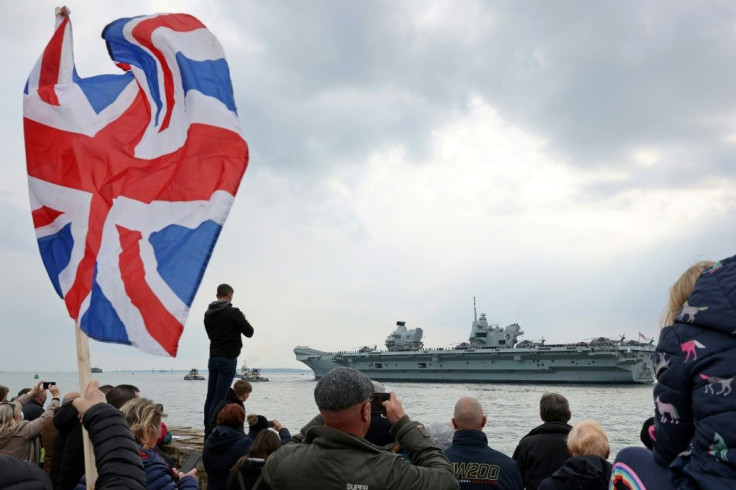British Carrier Group Avoids Direct Challenge to Beijing, Steers Clear Of Chinese Artificial Islands
KEY POINTS
- The strike group has left the South China Sea and is currently on the Philippine Sea
- German warship Bayern started its journey to the Indo-Pacific region on Monday
- China told Germany to clarify its intentions about Bayern's journey
U.K.'s Carrier Strike Group led by HMS Queen Elizabeth chose to steer clear of China's artificial islands during its voyage through the South China Sea, thereby avoiding a direct challenge to Beijing's territorial claims.
A statement by the Chinese Foreign Ministry Wednesday said the strike group "didn't enter within 12 nautical miles of Chinese islands in the South China Sea," reported South China Morning Post.
"China hopes navy vessels of other nations abide by international law when sailing across the South China Sea, respect the rights and sovereignty of the coastal nations, and avoid actions that damage regional peace," the ministry added in the statement.
The Carrier Strike Group was in the disputed waterways for a "Freedom of Navigation" exercise through the South China Sea.
Though Britain reiterated that it was not looking for a confrontation, China had warned the Carrier Strike Group against carrying out any "improper acts," adding that the "People's Liberation Army (PLA) Navy is at a high state of combat readiness." PLA had also carried out a three-day military drill in the South China Sea, coinciding with the carrier group's arrival.
However, Britain chose not to join the U.S. in challenging the Chinese claims.
Though analysts say it would be difficult for the U.S. to rope in allies and partners to carry out freedom of navigation operations in the region, many think it is too early to say so.
Macau-based military expert Antony Wong Tong told South China Morning Post that Queen Elizabeth and its support ships had already challenged China’s sovereignty by sailing within the "nine-dash line."
"The British strike group won’t wrap up its Asia-Pacific voyage until the end of this year. So there’s still time for the warships to sail within 12 nautical miles of Chinese-claimed islands," he added.
The warship has now left the South China Sea and is sailing through the Philippine Sea.
Meanwhile, German warship Bayern started its journey to the Indo-Pacific region on Monday, the first time in almost two decades. The ship is expected to cross the South China Sea on its return journey in December, reported CNN.
Though officials in Berlin clarified that the frigate will stick to common trade routes and avoid the Taiwan strait or within 12 nautical miles of any land in the disputed region, China isn't convinced.
On Tuesday, Beijing warned Germany that it would not consider a port call request from the frigate at Shanghai until Berlin clarifies its intentions. "Regarding this warship operation, the information released by the German side before and after is too confusing. China will make a decision after the German side has fully clarified the relevant intentions," the Chinese Foreign Ministry spokesperson said while acknowledging the German request.
According to German defense minister Annegret Kramp-Karrenbaue, Bayern's Shanghai port visit was to "maintain dialogue."

© Copyright IBTimes 2024. All rights reserved.




















